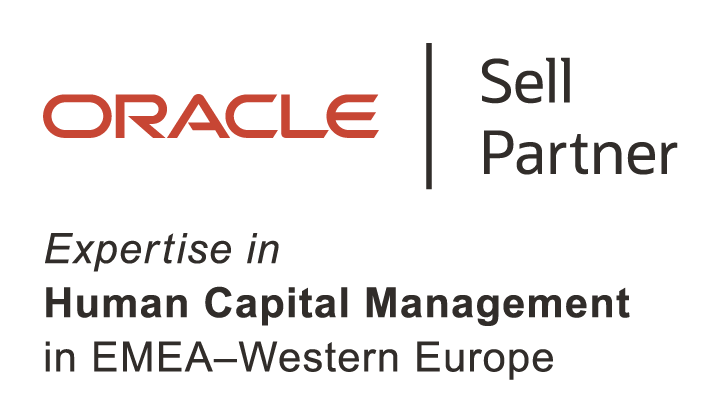Oracle HCM Implementation for Barnardo's

Barnardo’s utilises Oracle Human Capital Management (HCM) to roll out self-service Human Resources and recruitment.
Oracle E-Business Suite
Oracle HCM
Overview
At Barnardo’s, they believe in children – no matter who they are, what they have done or what they have been through. They believe in the vulnerable, the abused and the forgotten. They will support them, advocate for them and bring out the best in each and every child.
Barnardo’s vision is that the lives of all children and young people should be free from poverty, abuse and discrimination. They aim to help the UK’s most vulnerable children and young people transform their lives and fulfil their potential.
Barnardo’s implemented Oracle Human Capital Management (HCM) in 1999. Since then, it has grown significantly and transformed its operations.
In the past 14 years:
- Barnardo’s permanent headcount has doubled to more than 8,000.
- Barnardo’s has 15,000 registered volunteers.
- Barnardo’s’ chain of charity shops has grown significantly and provides a vital income stream.
Throughout this period of progress, Barnardo’s has continued to invest in its use of Oracle HCM, with major projects undertaken to roll out Self-Service Human Resources (HR) and iRecruitment.
However, the underlying Oracle HCM work structures have fundamentally remained the same.

"Our work with DSP has given Barnardo’s an HCM structure that supports our business model and is fit for our future. We now also have a sound platform that enables us to upgrade to R12."
ERP Applications Manager | Barnardo's

Download the Case Study PDF
The use of a complex position structure was preventing Barnardo’s from realising the benefits of their existing HCM implementation, resulting in:
- A significant investment in time to maintain positions.
- Frustration for users and the HR team due to the duplication of data; complex and confusing structure.
- Lack of confidence in the system due to data inconsistencies.
- Potential complexity and difficulty in the usage and deployment of Talent, Recruitment, Learning, Payroll and Finance.
- The change in the nature of Barnardo’s business and its increase in size and complexity led to a situation in which the management of positions had become complex, time-consuming, and restrictive.
- 26,014 positions have been defined.
- 14,000 positions are active.
- 5,042 positions are currently used.
- There is an active workforce of over 8,000 employees.
During an R12 Upgrade assessment, DSP recommended that a separate exercise be undertaken to address this problem before the upgrade as part of the Third Way thinking to avoid a re-implementation.
Barnardo’s engaged with us to review the work structures (job, position, grade, organisation, and locations), run a series of workshops to determine a structure that would support Barnardo’s today, and provide a platform to support the charity’s future business and systems aspirations. We were then responsible for delivering the technical components, working alongside Barnardo’s in-house HCM IT team.
The brief provided by Barnardo’s was to provide a solution to “support the Strategic Plan – true to our roots, fit for the future”. It needed to satisfy the appetite for business change:
- Current position, plus aspiring to One Barnardo’s.
- Consolidate and standardise – be radical.
- Streamline – consistent business processes, managed by exception.
- Efficiencies – working smarter, added value.
- Enabling – improved user experience.
- Maximise – improve the return on Total Cost of Ownership of software functionality.
During the workshops, it became clear that using Position in its original format was unsustainable. Barnardo’s had transformed into an agile and flexible organisation with a rapidly growing retail business. The need for a flexible, maintainable, transparent, and understandable set of work structures could not be achieved with the current set-up of almost 3,000 organisations, 67 jobs, and a six-segment Position structure.
After careful consideration, it was determined that moving from a Position-based structure to using jobs only could achieve all of Barnardo’s’ objectives. Barnardo’s didn’t use any of the unique functionality often associated with positions, such as position budgeting, position hierarchy for approvals, position hierarchy for security, and positions to drive self-service or establishment reporting. Moving away from Positions would cause a significant loss of functionality
DSP, together with Barnardo’s HR team, designed a job structure that provided consistency, clarity, and ease of maintenance. The two-segment structure combined Job Category and Job Title, allowing Barnardo to report at various levels and expose the entire job via Self-Service without confusion. This has reduced the maintenance overhead tenfold.
Barnardo’s HR team undertook a significant data cleansing and mapping exercise, mapping the 5,042 active positions to 600 new jobs. These new jobs are spread across 20 well-defined categories.
Working with Barnardo’s experienced Oracle team, we developed the migration framework and delivered the technical components, which ensured a smooth transition to the new work structures. Barnardo’s team also ensured that all professional and self-service functions continued to meet the needs of their business.
Work Structure in Oracle HCM provides the backbone of any Enterprise Resource Planning solution and is vital for reporting, security and representing the HCM view of the business.
They must be maintained and reviewed regularly to ensure that they are still fit for purpose. Barnardo’s has realised the following benefits.
- Significant reduction in work structure maintenance overheads.
- Simplified & understandable work structures.
- Growing confidence in data/system.
- Simplified reporting.
- Reducing the complexity of future rollouts of Talent / Recruitment / Learning / Payroll / Self-Service and additional Financial modules.
It also avoided the need for re-implementation when Barnardo moved to the next version of Oracle E-Business Suite.

Want to see what we can do for your business?
Get in touch with our specialists today and start your Oracle EBS journey with industry experts.
-Mar-16-2023-02-15-13-3656-PM.png?width=250&height=56&name=www.dsp.co.ukhs-fshubfsstonewater-logo%20(1)-Mar-16-2023-02-15-13-3656-PM.png)



